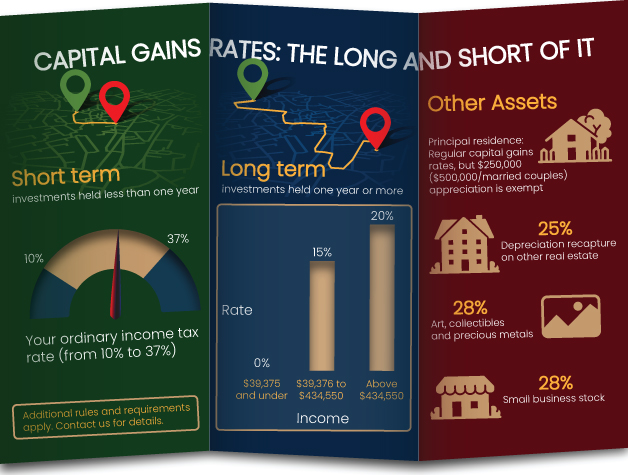
At the close of each year, businesses should update the financials in their business plan. A solid business plan will comprise of six sections: executive summary, business description, industry and marketing analysis, management team description, implementation plan, and financials.
Now, ideally, you would comprehensively update each section every year. But if the size, shape and objectives of your company haven’t changed all that much, you may not need to make major revisions to the entire plan. However, at the very least, you should always review and revise your financials.
Explain your route
Lenders, investors and other interested parties understand that descriptions of a business or industry analysis may be subject to interpretation. But financials are a different matter — they need to add up (literally and figuratively) and contain realistic projections in today’s dollars.
For example, suppose a company with $10 million in sales in 2019 expects to double that figure over a three-year period. How will you get from Point A ($10 million in 2019) to Point B ($20 million in 2023)? Many roads may lead to the desired destination; your business plan must explain its route.
Let’s say your management team decides to double sales by hiring four new salespeople and acquiring the assets of a bankrupt competitor. These assumptions will drive the projected income statement, balance sheet and cash flow statement referenced in your business plan.
Justify assumptions
When projecting the income statement, you’ll need to make assumptions about variable and fixed costs. Direct materials are generally considered variable. Salaries and rent are usually fixed. But many fixed costs can be variable over the long term. Consider rent: Once a lease expires, you could relocate to a different facility to accommodate changes in size.
Balance sheet items — receivables, inventory, payables and so on — are generally expected to grow in tandem with revenues. The financials in your business plan must accurately and reasonably justify the assumptions you’re making about your minimum cash balance, as well as debt increases or decreases to keep the balance sheet balanced. And these amounts must be current.
From a lending perspective, your bank will be expected to fund any cash shortfalls that take place as the company grows. So, realistic cash flow projections in your business plan are particularly critical. The financials section should outline how much financing you’ll need, how you intend to use those funds and when you expect to repay the loan(s).
Keep it fresh
Your business plan needs to tell an accurate, objective story of your company — where it’s been, where it is right now and where it’s heading. Keep the whole thing as fresh as possible but pay special attention to the numbers. We can help you review your financials, arrive at reasonable assumptions, and express your objectives and projections clearly.
Everyone needs to plan for retirement. But as a business owner, you face a distinctive challenge in that you must save for your golden years while also creating, updating and eventually executing a succession plan. This is no easy task, but you can put the puzzle pieces together by answering some fundamental questions:
When do I want to retire? This may be the most important question regarding your succession plan, because it’s at this time that your successor will take over. Think about a date by which you’ll be ready to let go and will have the financial resources to support yourself for your postretirement life expectancy.
How much will I need to retire? To maintain your current lifestyle, you’ll likely need a substantial percentage of your current annual income. You may initially receive an influx of cash from perhaps either the sale of your company or a payout from a buy-sell agreement.
But don’t forget to consider inflation. This adds another 2% to 4% per year to the equation. If, like many retirees, you decide to move to a warmer climate, you also need to take the cost of living in that state into consideration — especially if you’ll maintain two homes.
What are my sources of retirement income? As mentioned, selling your business (if that’s what your succession plan calls for) will likely help at first. Think about whether you’d prefer a lump-sum payment to add to your retirement savings or receive installments.
Of course, many business owners don’t sell but pass along their company to family members or trusted employees. You might stay on as a paid consultant, which would provide some retirement income. And all of this would be in addition to whatever retirement accounts you’ve been contributing to, as well as Social Security.
Am I saving enough? This is a question everyone must ask but, again, business owners have special considerations. Let’s say you’d been saving diligently for retirement, but economic or market difficulties have recently forced you to lower your salary or channel more of your own money into the company. This could affect your retirement date and, thus, your succession plan’s departure date.
Using a balance sheet, add up all your assets and debts. Heavy spending and an excessive debt load can significantly delay your retirement. In turn, this negatively affects your succession plan because it throws the future leadership of your company into doubt and confusion. As you get closer to retirement, integrate debt management and elimination into your personal financial approach so you can confidently set a departure date. We can help you identify all the different pieces related to succession planning and retirement planning — and assemble them all into a practical whole.
Merging with, or acquiring, another company is one of the best ways to grow rapidly. You might be able to significantly boost revenue, literally overnight, by acquiring another business. In contrast, achieving a comparable rate of growth organically — by increasing sales of existing products and services or adding new product and service lines — can take years.
There are, of course, multiple factors to consider before making such a move. But your primary evaluative objective is to weigh the potential advantages against the risks.
Does it make sense?
On the plus side, an acquisition might enable your company to expand into new geographic areas and new customer segments more quickly and easily. You can do this via a horizontal acquisition (acquiring another company that’s similar to yours) or a vertical acquisition (acquiring another company along your supply chain).
There are also some potential drawbacks to completing a merger or acquisition. It’s a costly process from both financial and time-commitment perspectives. In a worst-case scenario, an ill-advised merger or acquisition could spell doom for a business that overextends itself financially or overreaches its functional capabilities.
Thus, you should determine how much the transaction will cost and how it will be financed before beginning the M&A process. Also try to get an idea of how much time you and your key managers will have to spend on M&A-related tasks in the coming months — and how this could impact your existing operations.
You’ll also want to ensure that the cultures of the two merging businesses will be compatible. Mismatched corporate cultures have been the main cause of numerous failed mergers, including some high-profile megamergers. You’ll need to plan carefully for how two divergent cultures will be blended together.
Can you reduce the risks?
The best way to reduce the risk involved in buying another business is to perform solid due diligence on your acquisition target. Your objective should be to confirm claims made by the seller about the company’s financial condition, clients, contracts, employees and management team.
The most important step in M&A due diligence is a careful examination of the company’s financial statements — specifically, the income statement, cash flow statement and balance sheet. Also scrutinize the existing client base and client contracts (if any exist) because projected future earnings and cash flow will largely hinge on these.
Finally, try to get a good feel for the knowledge, skills and experience possessed by the company’s employees and key managers. In some circumstances, you might consider offering key executives ownership shares if they’ll commit to staying with the company for a certain length of time after the merger.
Who can help?
The decision to merge with another business or acquire another company is rarely an easy one. We can help you perform the financial analyses and project the tax implications of any prospective deal to bring the idea better into focus.
Can your business become more profitable without venturing out of its comfort zone? Of course! However, adding new products or services may not be the best way for your business — or any company — to boost profits. Bottom-line potential may lie undiscovered in your existing operations. How can you find these “hidden” profits? Dig into every facet of your organization.
Develop a profit plan
You’ve probably written and perhaps even recently revised a business plan. And you’ve no doubt developed sales and marketing plans to present to investors and bankers. But have you taken the extra step of developing a profit plan?
A profit plan outlines your company’s profit potential and sets objectives for realizing those bottom-line improvements. Following traditional profit projections based on a previous quarter’s or previous year’s performance can limit you. Why? Because when your company reaches its budgeted sales goals or exceeds them, you may feel inclined to ease up for the rest of the year. Don’t just coast past your sales goals — roar past them and keep going.
Uncover hidden profit potential by developing a profit plan that includes a continuous incentive to improve. Set your sales goals high. Even if you don’t reach them, you’ll have the incentive to continue pushing for more sales right through year end.
Ask the right questions
Among the most effective techniques for creating such a plan is to consider three critical questions. Answer them with, if necessary, brutal honesty to increase your chances of success. And pose the questions to your employees for their input, too. Their answers may reveal options you never considered. Here are the questions:
1. What does our company do best? Involve top management and brainstorm to answer this question. Identifying your core competencies should result in strategies that boost operations and uncover hidden profits.
2. What products or services should we eliminate? Nearly everyone in management has an answer to this question, but usually no one asks for it. When you lay out the tough answers on the table, you can often eliminate unprofitable activities and improve profits by adding or improving profitable ones.
3. Exactly who are our customers? You may be wasting time and money on marketing that doesn’t reach your most profitable customers. Analyzing your customers and prospects to better focus your marketing activities is a powerful way to cut waste and increase profits.
Get that shovel ready
Every business owner wishes his or her company could be more profitable, but how many undertake a concerted effort to uncover hidden profits? By pulling out that figurative shovel and digging into every aspect of your company, you may very well unearth profit opportunities your competitors are missing. We can help you conduct this self-examination, gather the data and crunch the resulting numbers.








